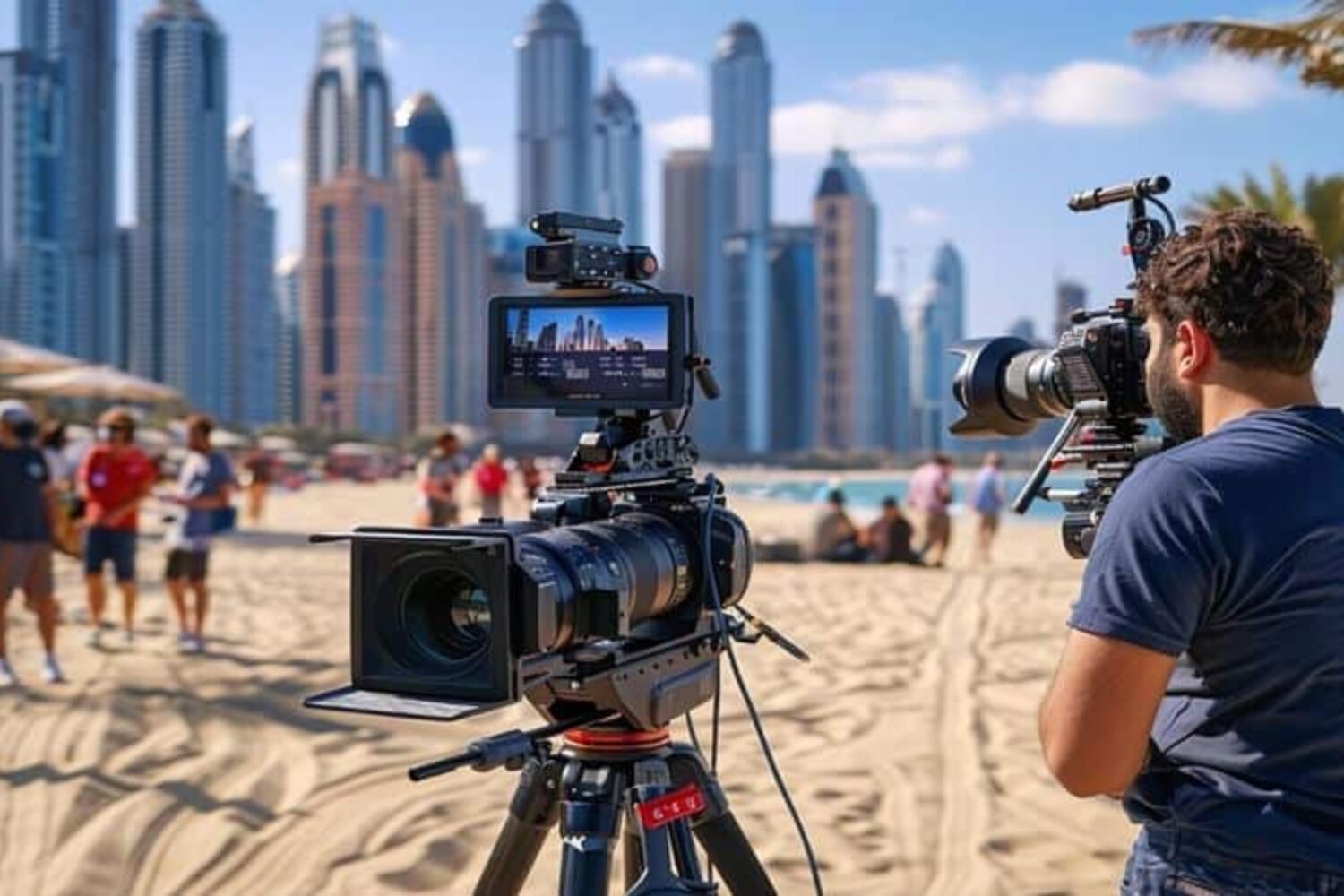Introduction
Dubai has rapidly become a creative powerhouse in the Middle East, attracting brands, filmmakers, and marketers from around the globe. From sleek corporate explainers to cinematic commercials, video production in Dubai offers world-class quality with diverse locations, experienced talent, and cutting-edge technology.
However, producing a professional video in Dubai in 2025 involves multiple cost factors that can significantly affect your budget. Whether you are a startup on a tight budget or a global brand planning a high-end commercial, this detailed guide breaks down all the components that influence video production costs in Dubai.
Key Cost Factors in Dubai Video Production
Video production is more than just pressing “record.” Below are the major elements that determine the final cost of any production.
1. Type of Video
The kind of video you’re producing plays a big role in budgeting:
- Corporate Videos: Generally cost-effective and range from AED 5,000–30,000 depending on complexity. These may include interviews, office tours, or brand messaging.
- Commercials: Designed for TV or digital campaigns, and often require larger crews, actors, and top-tier equipment. Budget ranges from AED 30,000 to 200,000+.
- Event Coverage: Filming corporate events, expos, or product launches typically ranges from AED 8,000 to 25,000.
- Explainer or Product Videos: Simple animated or live-action videos designed to introduce products or services. Pricing starts at AED 10,000 and can go up to AED 50,000.
- Social Media Content: Short, snappy videos optimized for platforms like Instagram or TikTok. Budgets vary widely, from AED 2,500 to AED 15,000 per video.
2. Length of the Video
Longer videos do not always mean proportionally higher costs, but runtime does affect editing time, data storage, and overall planning:
- Under 1 minute: Quick ads, reels, or teasers — generally less costly if no elaborate setups are involved.
- 1–3 minutes: Standard for promos, explainers, or testimonials.
- Over 3 minutes: Corporate profiles, documentary-style pieces, or training videos require more extensive editing and production time.
3. Production Quality and Crew
The number of people involved in the shoot, their skill level, and their day rates can significantly increase the total cost.
- Basic setup (1–2 people): AED 3,000–5,000/day. Ideal for vlogs or interviews.
- Standard crew (4–6 people): AED 8,000–15,000/day. Includes director, DOP, assistant, and sound.
- High-end team (10+ crew): AED 20,000–50,000/day. Includes stylists, gaffers, drone operators, and more.
You’ll also need to factor in pre-production planning, storyboarding, and scriptwriting, which can range from AED 2,000 to 10,000.
4. Equipment and Technical Requirements
Equipment rental is a major cost driver. Dubai offers access to top-tier gear — but with a price.
- Camera Packages: A DSLR setup may cost AED 1,000/day, while a RED or ARRI setup may cost AED 3,000–8,000/day.
- Lighting and Grip: Basic lighting starts at AED 500/day; professional kits can go up to AED 5,000/day.
- Drone Footage: Licensed drone operators in Dubai charge around AED 2,000–6,000 depending on the location and flight permissions.
- Audio Equipment: Lavalier or boom mic setups range from AED 300–1,000/day.
5. Talent, Casting, and Voiceover
Hiring professional talent will significantly impact your budget.
- Actors and Presenters: Local actors start at AED 1,000/day; celebrity influencers or TV actors may demand AED 10,000–50,000+.
- Voiceover Artists: Range from AED 500 to AED 2,000 per recording depending on language, length, and experience.
- Models, Extras, and Dancers: If required, expect AED 500–2,000 per person/day.
Dubai’s diverse talent pool allows for multilingual and multicultural casting — a big plus for global brands.
6. Filming Locations and Permits
Dubai offers visually stunning filming locations — deserts, beaches, luxury hotels, skyscrapers, and more. However, location costs include:
- Permit Fees: The Dubai Film and TV Commission (DFTC) requires permits for public and some private shoots. Expect AED 500–5,000+ depending on location.
- Studio Rentals: Basic green screen studios start at AED 1,000/day; premium facilities can charge AED 10,000+/day.
- Location Management: Hiring a location scout or coordinator may cost AED 1,500–3,000/project.
7. Post-Production Costs
Post-production can be as demanding as the shoot itself.
- Video Editing: AED 1,000–5,000 per final minute of video.
- Color Grading: AED 1,000–3,000 per video.
- Motion Graphics/Animation: AED 2,000–10,000 per minute, especially for explainer or logo animation.
- Sound Design: AED 1,000–4,000 including mixing and mastering.
- Subtitles and Localization: AED 300–1,500 per language version.
Estimated Budget Tiers (2025 Pricing)
| Budget Range (AED) | Video Type | Description |
|---|---|---|
| 5,000 – 15,000 | Social media, basic interviews | Small crew, minimal editing, quick turnaround |
| 15,000 – 50,000 | Corporate, product explainers | Professional crew, 1–2 days of filming, standard post |
| 50,000 – 150,000 | Commercials, animated explainers | High production value, advanced VFX, professional actors |
| 150,000 – 300,000+ | TVCs, tourism campaigns, documentaries | Large crews, multiple locations, extensive planning |
Ways to Reduce Costs Without Sacrificing Quality
- Pre-plan everything: Avoid reshoots and delays by finalizing scripts, locations, and timelines ahead of time.
- Use local talent and crew: Dubai has a growing pool of experienced professionals.
- Minimize shooting days: The more organized your production, the less time (and cost) required on set.
- Repurpose footage: Capture extra content to create multiple deliverables from one shoot.
- Opt for stock assets: Use stock music, graphics, and footage when custom creation isn’t critical.
Legal and Administrative Considerations
Filming in Dubai requires specific administrative planning:
- Permits: Always apply for a permit through the DFTC for public locations. This protects you legally and logistically.
- Insurance: Production insurance is highly recommended to cover liability, equipment, and crew.
- Contracts: Always have contracts for freelancers, actors, and location owners. This helps avoid disputes and defines deliverables.
- Usage Rights: Ensure you secure global or regional usage rights for music, footage, and talent appearances.
Conclusion
Dubai’s video production industry offers immense potential, but it comes at a range of costs depending on your needs. Whether you’re shooting a simple testimonial or a cinematic commercial, understanding the various budget elements — from crew and equipment to post-production and permits — is essential.
In 2025, a well-planned video in Dubai can cost as little as AED 5,000 or as much as AED 300,000+, depending on your goals, expectations, and execution strategy. The key to maximizing value lies in careful planning, clear communication, and partnering with experienced professionals who understand the local industry.
For the best outcome, request quotes from multiple agencies, ask to see portfolio examples, and don’t hesitate to negotiate — a good production partner will work with your budget to deliver results.







